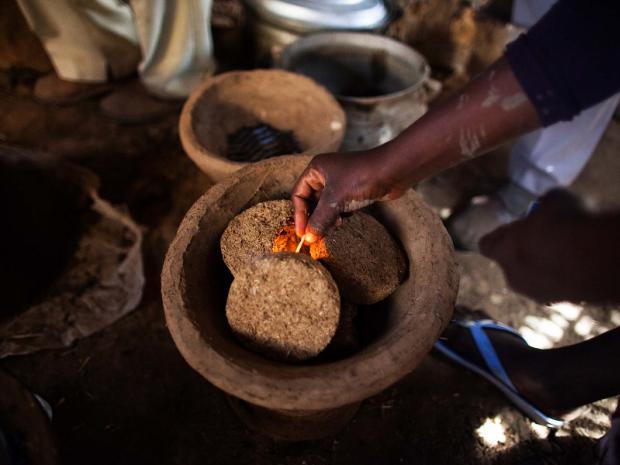Ending food crises requires immediate humanitarian assistance but also long-term support to limit future shortages. How to advance this ‘twin-track approach’ to nutrition was one of the main agenda items when the Executive Director of the World Food Programme (WFP), Ertharin Cousin, visited the European institutions in Brussels earlier this year.
On average more than 800 million people do not have enough food to live a healthy life, with this number rising during food shortages triggered by conflict or natural disaster. In 1994, the WFP adopted a mission statement to “meet emergency needs [and] support economic & social development”.
Ms Cousin told capacity4dev the WFP was founded in the early 1960s as both a humanitarian and development organisation. However, “because of the nature of how the organisation developed, as 100 % voluntary-funded, we can only perform work where donors invest in our activities. And for many years the global community invested primarily in the humanitarian activities of the organisation, so it limited our ability to perform many types of development work.”
| Jean-Pierre Halkin, Head of the Rural Development, Food Security and Nutrition Unit at DEVCO, has explained how the profound impact of undernutrition went overlooked for too long by the international community, and how the EU changed its approach. Read the full article here. |
This is changing. WFP’s development partners, including the European Union, also want to build resilience.
“You can save money by increasing a vulnerable population's ability to overcome and withstand shocks,” Ms Cousin said. "DEVCO [the EU’s development cooperation arm] recognised that with the opportunity to address the challenges of resilience you can have a twin-track approach … While providing the support that is necessary to meet acute needs, begin to provide the assistance as well to address the chronic challenges."
| The EU Resilience Compendium illustrates how the resilience approach is being translated into reality by the EU, by governments, other donors, agencies, civil society organisations (CSOs) and vulnerable communities. |
In a September 2013 speech to the Development Committee of the European Parliament, Ms Cousin said “WFP’s own work and thinking is well-aligned with the twin-track strategy.”
She cited work in Kenya, where in 2011 the Turkana people were better able to manage the effects of drought thanks to a WFP Food Assistance for Assets programme.
“They were prepared with excavated water-ponds and the rehabilitation of once degraded farming land. They protected their livestock, they weren’t forced to use detrimental coping strategies and crops during the drought. They are now less reliant on external aid.”
WFP fuel-efficient stoves program - Photo by Albert Gonzalez Farran, UNAMID.
|
The European Union and the World Food Programme
See the WFP’s donor profile on the European Commission here. |
Ms Cousin is asking all donors to pledge more “core funding”, which allows the WFP to decide where to allocate resources.
"If we are only funded for one year or for a particular project that means that you can't provide the outcomes that will ensure that you can change the opportunities for people," she said. "If the global community will provide us with more flexibility in funding it will give us the ability to invest in areas where funding is needed to drive additional or better outcomes."
The WFP is also seeking to rely less on in-kind donations, whereby it ships food (often from its largest donor, the United States) to needy populations. Evidence suggests that providing money for people to buy food locally is better able to provide nutritious food and support local markets.
“The reality is in some places where food is not available in-kind donation is the only way for us to provide the food assistance that is necessary,” Ms Cousin said. “But the United States is also our largest cash donor now as well, because there is a recognition that where food is available but the poor and vulnerable don't have access to food, we hurt markets, we hurt small-holders, if we bring in food.”
|
Fever Pitch: The Fight Against the Long-Term Effects of Child Hunger Often beginning in the womb as poverty-stricken mothers live hand-to-mouth, stunting can be a lifelong affliction. Studies show it is linked to poor cognition and educational performance, low adult wages and lost productivity. A stunted child is nearly five times more likely to die from diarrhoea than a non-stunted child because of the physiological changes in a stunted body. |
|
The Family Meal – What Brings Us Together? Five countries, three continents, one universal custom: sharing a meal with family members. Photographer Chris Terry went in search of the ingredients of the family meal, visiting families in Ecuador, Chad, Niger, Jordan and Myanmar. Their meals were made possible thanks to the United Nations World Food Programme (WFP) and funding from the European Union (ECHO). Chris Terry’s pictures reveal that our desire to share is one of the most essential ingredients, not only for the family meal, but also for a zero hunger world. See the winners of the Family Meal photo competition here. |
This collaborative piece was drafted with input from Philippe Thomas (DEVCO) and Beatrix Senoner (WFP), with support from the capacity4dev.eu Coordination Team. Teaser image courtesy of WFP/Giulio d'Adamo.


Log in with your EU Login account to post or comment on the platform.